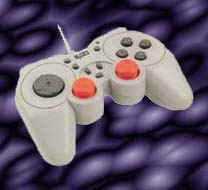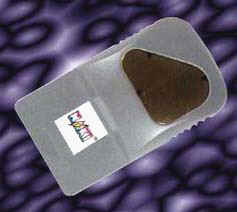
Developer: Midway Games Inc., converted by Eurocom Developments Ltd. Publisher: Midway Games Inc. Genre: Fighting |


Developer: Midway Games Inc., converted by Eurocom Developments Ltd. Publisher: Midway Games Inc. Genre: Fighting |
Genre: Peripheral Title: Analog Rocker Pad |

|
Title: Six Mega Byte Memory Card Genre: Peripheral |

|
Genre: Peripheral Title: GameShark |

|
Title: V3 Racing Wheel Genre: Peripheral |

|
| [More Console-tations] | [Back to Collector Times] |
| [Prev.] | [Return to Reviews] | [Return to Gaming] | [Disclaimer] | [Next] |